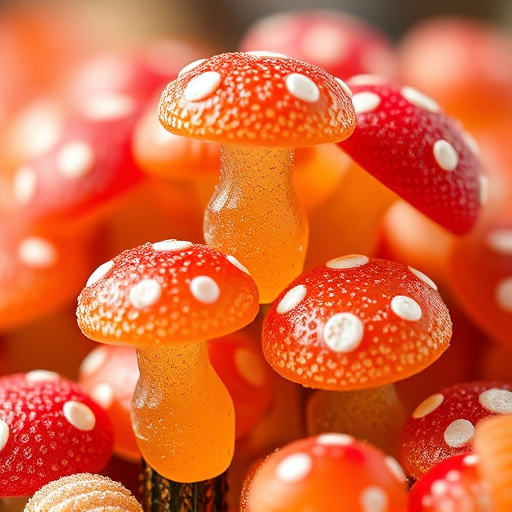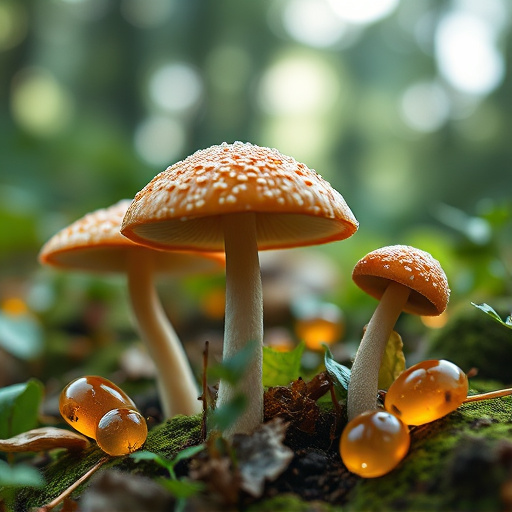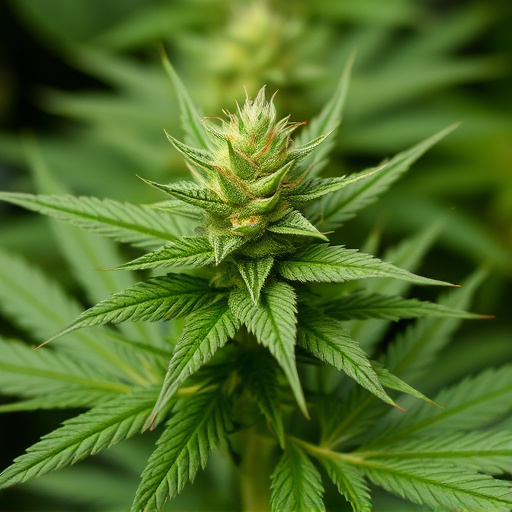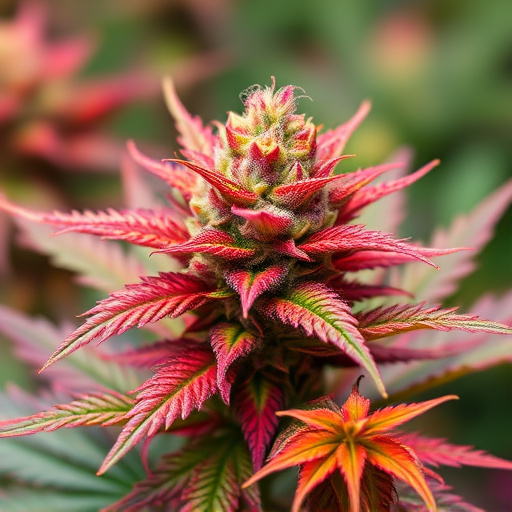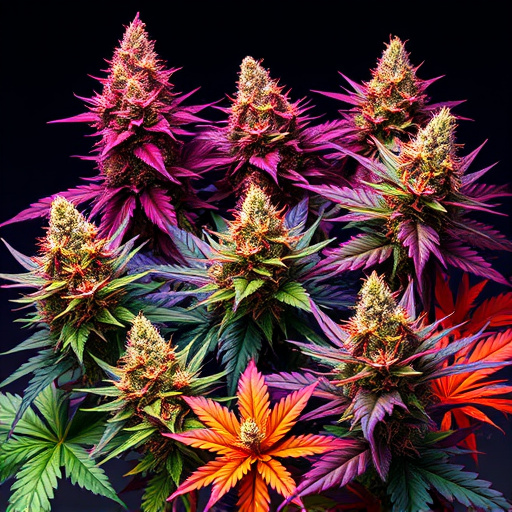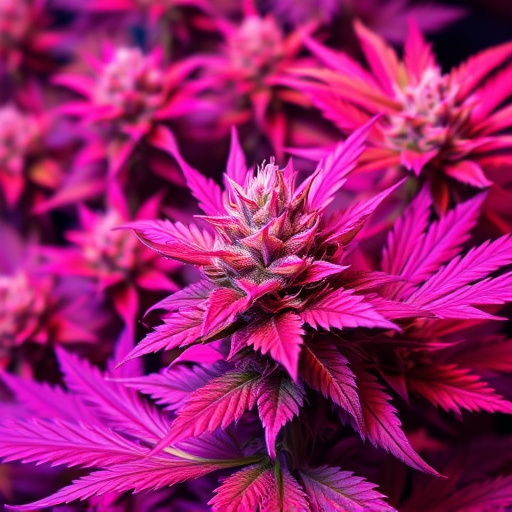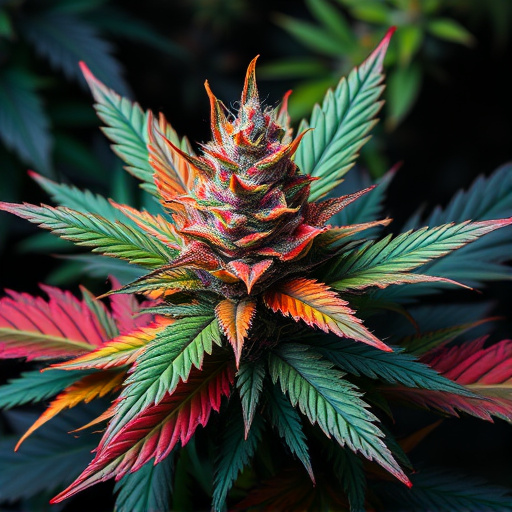Marijuana's effect on mood is mediated through its interaction with the body's endocannabinoid system, with cannabinoids like THC and CBD influencing brain areas related to pleasure. Modern colorful marijuana strains offer diverse cannabinoid profiles catering to various desired effects. While these strains can enhance relaxation or potentially provide therapeutic benefits for specific mood disorders, long-term use carries risks, especially for individuals with mental health conditions. A balanced approach involving mindfulness and healthcare professional consultation is crucial for safely exploring these strains' benefits without compromising overall well-being.
Can weed make you happier? This question delves into the often-complex relationship between marijuana and mood. While popular culture portrays cannabis as a path to bliss, science offers a more nuanced perspective. We explore the chemical composition of weed and how specific strains, with their vibrant colors, may influence our emotions. Balancing potential risks and benefits, especially for long-term use, is crucial, particularly in awareness of mental health. Unraveling these factors can shed light on whether cannabis truly enhances happiness or if it’s a fleeting high.
- The Science Behind Marijuana and Mood: Exploring the Chemical Composition of Weed
- The Role of Specific Strains: Uncovering the Impact of Colorful Marijuana Varieties
- Balancing Act: Potential Risks and Benefits for Long-Term Use and Mental Health Awareness
The Science Behind Marijuana and Mood: Exploring the Chemical Composition of Weed
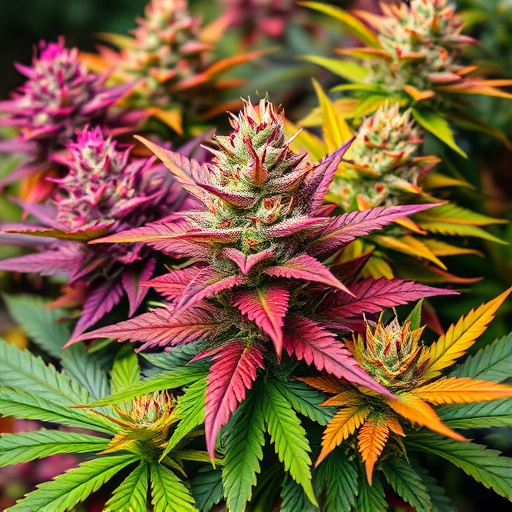
Marijuana has long been a subject of debate, especially regarding its impact on mood and mental health. The science behind this plant and its effects on the human mind is complex and multifaceted. Marijuana, or Cannabis sativa, contains over 100 chemical compounds known as cannabinoids, with two primary ones being THC (tetrahydrocannabinol) and CBD (cannabidiol). These cannabinoids interact with our body’s endocannabinoid system, which plays a role in regulating mood, memory, appetite, and pain perception.
THC is often associated with the euphoric high that users experience, but its interaction with mood receptors is not as straightforward as popular belief suggests. Studies have shown that THC can stimulate areas of the brain linked to pleasure and reward, leading to feelings of happiness and relaxation. However, the impact of marijuana on mood is highly variable and depends on numerous factors, including an individual’s genetics, the specific chemical composition of the plant (such as different colorful marijuana strains), and personal tolerance or sensitivity. The diverse range of cannabinoid profiles in modern strains means that users can find varieties that cater to their desired effects, whether it’s relaxation, creative inspiration, or even potential therapeutic benefits for certain mood disorders.
The Role of Specific Strains: Uncovering the Impact of Colorful Marijuana Varieties
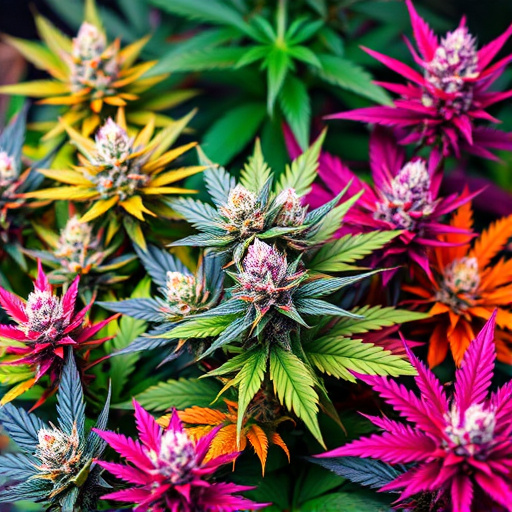
The world of marijuana is diverse, and one aspect that often goes overlooked is the role of specific strains in shaping the user’s experience. Among the countless varieties available, colorful marijuana strains have garnered attention for their unique visual appeal and potential therapeutic benefits. These strains, characterized by vibrant bud colors ranging from vivid blues to rich purples and fiery oranges, offer more than just eye-catching displays.
Research suggests that different cannabinoid profiles within these colorful strains can contribute to varying effects on mood and well-being. For instance, strains with higher levels of THC (tetrahydrocannabinol), the primary psychoactive compound, may induce feelings of euphoria and happiness in some users. Conversely, strains rich in CBD (cannabidiol) are known for their calming properties, which could potentially enhance relaxation and overall contentment. Thus, exploring colorful marijuana varieties can provide an exciting journey into personalized cannabis experiences, where specific strains cater to individual needs for achieving a happier state of mind.
Balancing Act: Potential Risks and Benefits for Long-Term Use and Mental Health Awareness
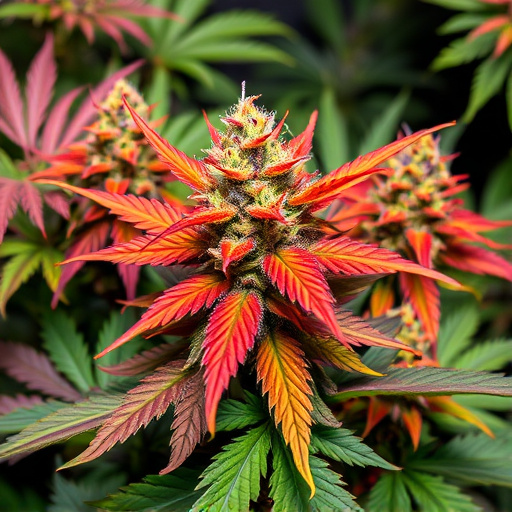
When considering whether weed can make you happier, it’s crucial to approach this from a balanced perspective, weighing both potential risks and benefits, especially for long-term use. While some people claim that certain colorful marijuana strains offer therapeutic effects, such as relaxation and mood enhancement, regular consumption comes with its own set of challenges. Mental health awareness is paramount; cannabis can interact with our brains’ endocannabinoid system, influencing mood and perception. For those with pre-existing mental health conditions, this interaction may pose risks, potentially exacerbating symptoms or triggering new issues like anxiety or depression.
Long-term use also presents a balancing act. While occasional use might be harmless, consistent reliance on cannabis for happiness could lead to dependence or adverse effects on cognitive function and overall well-being. Exploring the benefits of different colorful marijuana strains should involve mindfulness and consultation with healthcare professionals to ensure a safe and healthy experience tailored to individual needs and circumstances.
While research into the relationship between weed and happiness is ongoing, exploring the science behind marijuana’s effects on mood offers valuable insights. The chemical composition of different strains plays a significant role in their ability to induce positive emotions. Specifically, the unique combinations of cannabinoids and terpenes in colorful marijuana varieties can contribute to tailored experiences for users seeking relaxation or enhancement. However, it’s crucial to balance potential risks and benefits, especially with long-term use. Mental health awareness is key; understanding both the positives and negatives of these powerful natural compounds empowers individuals to make informed decisions regarding their well-being.
